400046
Hydroxyurea
≥98% (HPLC), solid, RNR inhibitor, Calbiochem
Synonym(s):
Hydroxyurea, Ribonucleotide Reductase Inhibitor I, RNR Inhibitor I
About This Item
Recommended Products
Product Name
Hydroxyurea, Anti-neoplastic agent that blocks DNA replication by inhibiting ribonucleotide reductase.
Quality Level
description
Merck USA index - 14, 4848
Assay
≥98% (HPLC)
form
solid
manufacturer/tradename
Calbiochem®
storage condition
OK to freeze
color
white
solubility
water: 5 mg/mL
shipped in
ambient
storage temp.
2-8°C
SMILES string
N(O)C(=O)N
InChI
1S/CH4N2O2/c2-1(4)3-5/h5H,(H3,2,3,4)
InChI key
VSNHCAURESNICA-UHFFFAOYSA-N
General description
Biochem/physiol Actions
Inhibiting ribonucleotide reductase
Warning
Reconstitution
Other Notes
Tsuchiya, K., et al. 1999. Free Radic. Biol. Med. 27, 347.
Anand, S., et al. 1995. Cancer Lett.88, 101.
Legal Information
Signal Word
Danger
Hazard Statements
Precautionary Statements
Hazard Classifications
Muta. 1B - Repr. 2
Storage Class Code
6.1C - Combustible acute toxic Cat.3 / toxic compounds or compounds which causing chronic effects
WGK
WGK 3
Flash Point(F)
Not applicable
Flash Point(C)
Not applicable
Certificates of Analysis (COA)
Search for Certificates of Analysis (COA) by entering the products Lot/Batch Number. Lot and Batch Numbers can be found on a product’s label following the words ‘Lot’ or ‘Batch’.
Already Own This Product?
Find documentation for the products that you have recently purchased in the Document Library.
Customers Also Viewed
Active Filters
Our team of scientists has experience in all areas of research including Life Science, Material Science, Chemical Synthesis, Chromatography, Analytical and many others.
Contact Technical Service








